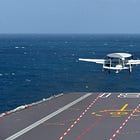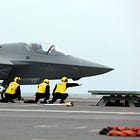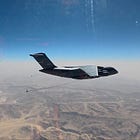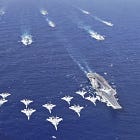Chinese CATOBAR Aircraft Carrier And CATOBAR J-15T Together Facilitate Carrier-Based Aerial Refuelling Capability
🇨🇳
The recent commissioning of China’s first catapult-assisted take-off barrier arrested recovery (CATOBAR) aircraft carrier, the Fujian (18), constitutes a major milestone in the evolution of the People’s Liberation Army Navy Air Force (PLANAF). The PLANAF exclusively operated ground-based fixed-wing crewed combat aircraft fifteen years ago and only divested of such aircraft in 2023 to reorient itself as an aircraft carrier-centric force. One of the most important implications of the combination of the Fujian and the CATOBAR J-15T fighter concerns how the PLANAF now possesses a meaningful, albeit imperfect, carrier-borne aerial refuelling capability.
The original J-15, as opposed to the CATOBAR J-15T deployed on the Fujian alongside the low-observable CATOBAR J-35, is a short take-off, barrier-arrested recovery (STOBAR) aircraft deployed for use with China’s first two operational aircraft carriers, the Liaoning and Shandong, both of which are STOBAR aircraft carrier designs. All fixed-wing aircraft operating from STOBAR aircraft carriers do so in a necessarily degraded capacity relative to operations from a longer terrestrial runway or a CATOBAR aircraft carrier as a result of the restrictions of maximum take-off weight imposed by the use of a short runway featuring a ski-jump. This is manifested in terms of a lowered maximum take-off weight, a dynamic that particularly affects the J-15, which is, like the underlying Soviet Su-27 design, a large and exceptionally heavy fighter aircraft even in an unladen and minimally fuelled configuration.
Despite the inherent limitations of the STOBAR J-15 as deployed on the STOBAR aircraft carrier Liaoning and Shandong, the PLANAF decided to develop a carrier-borne aerial refuelling capability very early in the history of Chinese carrier-borne naval aviation. The STOBAR J-15 is the Chinese derivative of the Sukhoi T-10K, a member of the Su-27 design family and the prototype for the STOBAR Su-33 operated by Soviet Naval Aviation and later Russian Naval Aviation on the Russian aircraft carrier Admiral Kuznetsov, which is the sistership of the Chinese Lioning (ex-Varyag) and the direct design ancestor of the Chinese-built Shandong, which is essentially an extensively modified version of the underlying Soviet STOBAR aircraft carrier design. The Soviet Su-33 was developed to use the Soviet UPAZ “buddy” refuelling pod, which extends a drogue through which a refuelling probe-equipped aircraft can receive fuel.
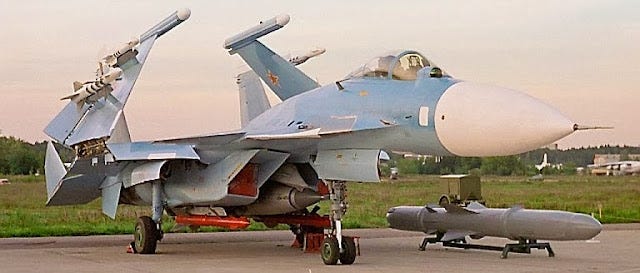
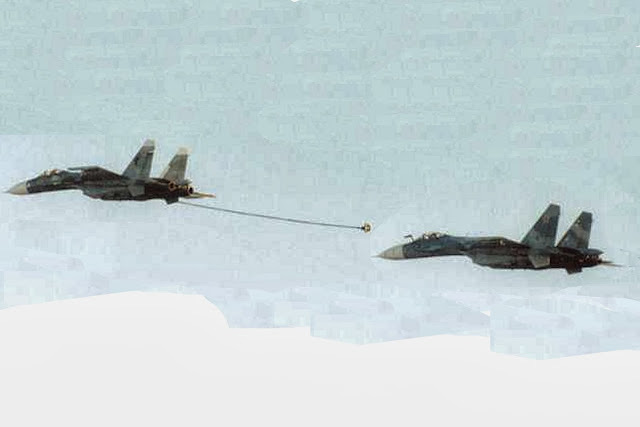
The original STOBAR J-15 was trialled and later deployed first on the Liaoning and then the Shandong with such a “buddy” refuelling pod, which is carried on a centerline station. It bears emphasis that the STOBAR J-15 has a greatly restricted maximum take-off weight when operating from a STOBAR aircraft carrier, so the transferable fuel load of a STOBAR J-15 taking off from an STOBAR aircraft carrier is very limited, as is its range-endurance.
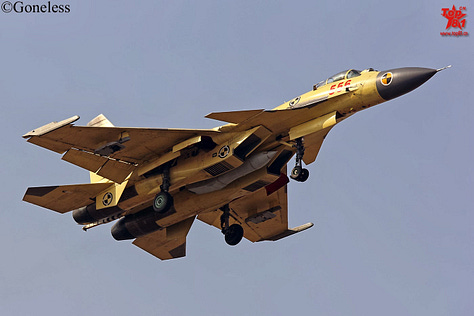


The PLANAF is likely to have developed an aerial refuelling capability for the original STOBAR J-15 despite its limitations for a variety of reasons that will be discussed later in this post. Suffice it to say, the PLANAF was focusing on long-term capability development such that it is now on the fast track to deploying and regularly employing this capability a more a decade later.
With the advent of the CATOBAR J-15T and CATOBAR aircraft carrier Fujian, the PLANAF can now make full use of J-15T aircraft in an aerial refuelling role. When operating from the Fujian, CATOBAR J-15T fighter aircraft face minimal restrictions in terms of maximum take-off weight and can be used to refuel other J-15T fighters, J-35 fighters, as well as the KJ-600 CATOBAR airborne early warning and control (AEW&C) aircraft if and when the KJ-600 is equipped with an aerial refuelling probe.
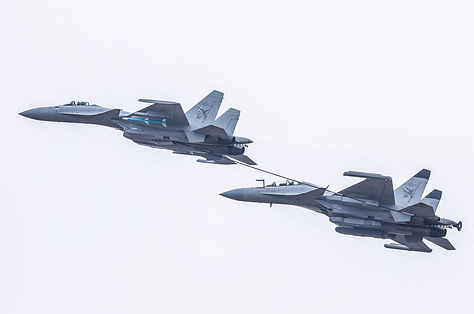
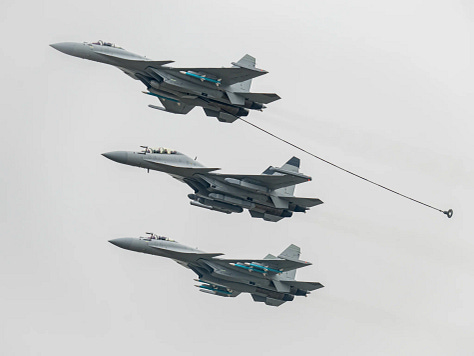

This approach to aerial refuelling, in which fighter aircraft are equipped with a “buddy” refuelling pod to refuel probe-equipped carrier-borne aircraft, is also practiced by the United States Navy, the French Navy, and the Indian Navy. It is worth noting that while the United States Air Force primarily uses the very different flying boom method of aerial refuelling, the fixed-wing carrier-borne and ship-borne aircraft operated by the United States Navy and the United States Marine Corps exclusively use the probe and drogue refuelling method, which is the only aerial refuelling method currently used by the Chinese military. While there are trade-offs associated with each aerial refuelling method, which employ mutually incompatible hardware on both the transferring and receiving aircraft, the probe and drogue method is the only approach that is practical for use with smaller fighter-sized refuelling aircraft and is perfectly suitable for then PLANAF’s needs even in a context in which the People’s Liberation Army Air Force (PLAAF) would increasingly benefit from emulating the flying boom method that the United States Air Force heavily relies on. As things stand, the PLANAF’s carrier-borne fighter aircraft can be refuelled by PLAAF fighter aircraft equipped with a “buddy” refuelling pod and vice versa, and PLANAF carrier-borne fighter aircraft, among others, can be refuelled by the PLAAF’s Il-78, YY-20A, and Y-20B/YY-20B aerial refuelling aircraft.

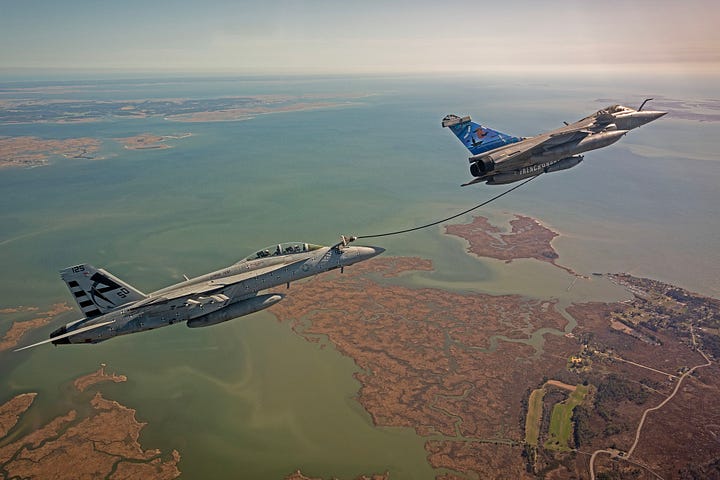
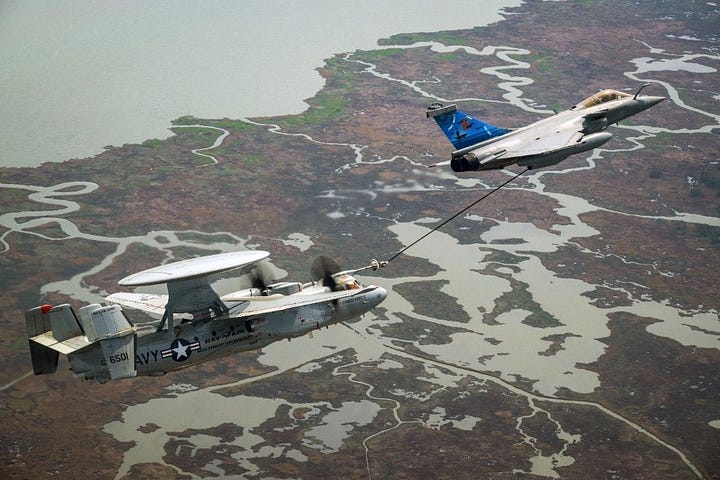
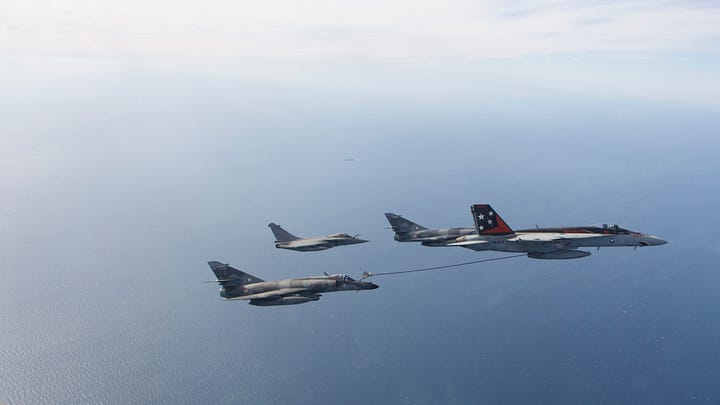

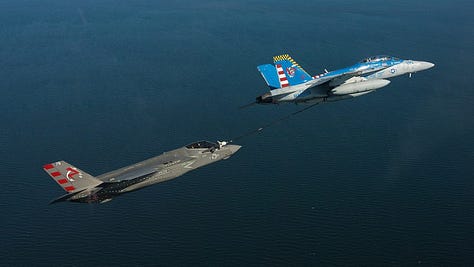

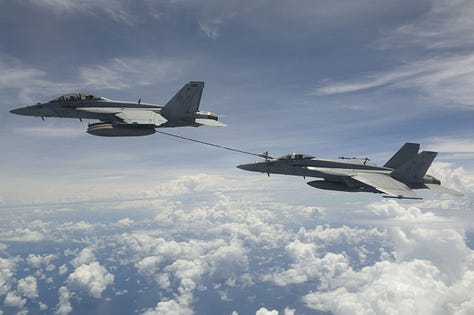
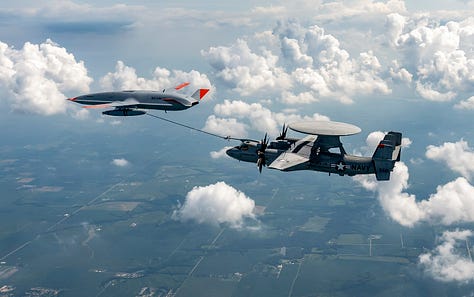
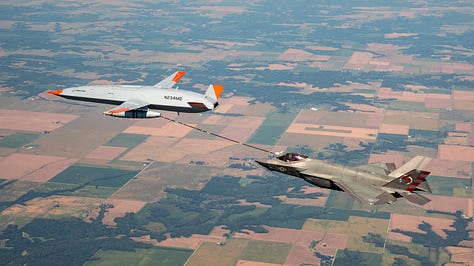
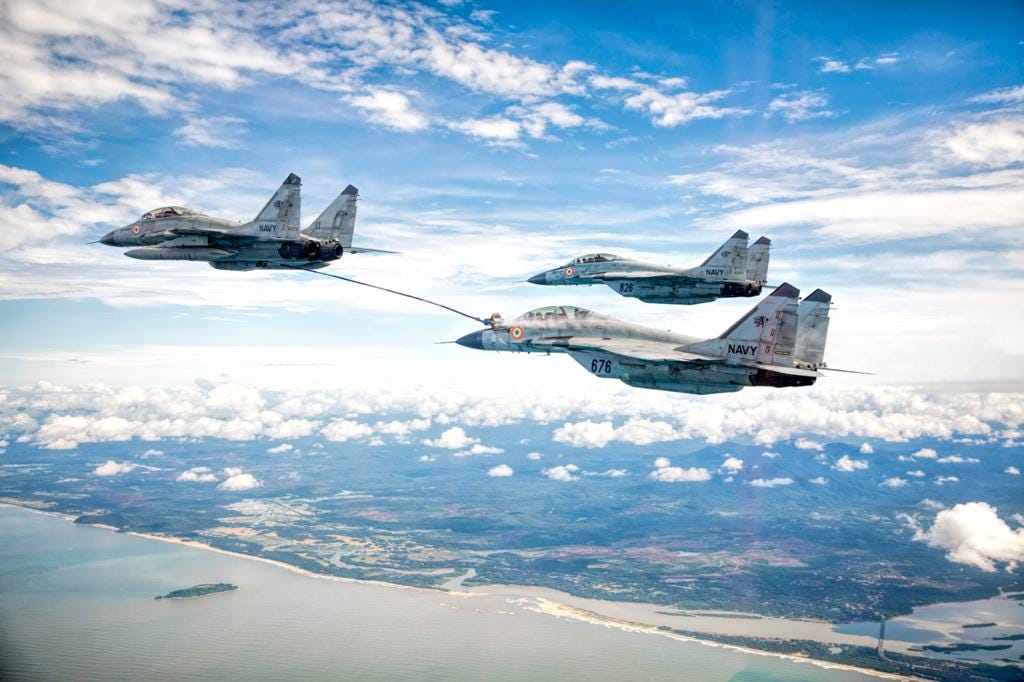
While aerial refuelling is often viewed as a means of extending the range of an aircraft, aerial refuelling is best understood as extending the range-endurance of an aircraft. Simply stated, aerial refuelling can be used to allow carrier-borne aircraft to attack more distant targets and allow carrier-borne aircraft to undertake a combat air patrol around the host aircraft carrier for several more hours than would otherwise be the case. It bears emphasis that the physiological endurance of human pilots is greater than the maximum flight endurance of most fully loaded non-bomber crewed combat aircraft (absent aerial refuelling). Given this, aerial refuelling is increasingly important for air forces and navies alike, as it concerns extending endurance, given the imperative of squeezing as much as possible from each aircraft sortie. While flight hours undoubtedly affect maintenance needs and are ultimately restricted more by human physiological constraints than fuel availability, provided that aerial refuelling is undertaken, the number of sorties, which encompass take-off and landing sequences and the mechanical and structural effects thereof, is a particularly important logistical consideration as it concerns carrier-borne aircraft.
A carrier-borne aerial refuelling capability is also important for several other reasons. First, aerial refuelling allows a CATOBAR aircraft to take off at the highest possible maximum take-off weight (MTOW), which is determined by the catapult launch system (an electromagnetic, as opposed to a steam, design on China’s first CATOBAR aircraft carrier, the Fujian). Stated differently, aerial refuelling will allow a CATOBAR aircraft to carry the maximum possible munitions load with a reduced fuel load in order to meet MTOW restrictions, with the aircraft having its fuel tanks topped off following take-off.
Second, a carrier-borne aerial refuelling capability is extremely important when it comes to landing operations, and this is likely to be why the PLANAF originally pursued “buddy” refuelling with the original STOBAR J-15 despite the heavily restricted MTOW of the J-15 when operating from the STOBAR aircraft carriers Liaoning and Shandong. There are times when a carrier-borne aircraft cannot land on the host aircraft carrier. This can be due to a situation on the flight deck, such as a crash, an immobilized aircraft, or a fire. It can be due to local environmental conditions, such as heavy seas, prohibitively high wind speeds, and so forth. Whatever the cause, any airborne aircraft that cannot land will eventually run out of fuel, flame out, and ultimately crash into the planet’s surface. Unless there is a suitable nearby terrestrial runway that can be reached with the remaining amount of fuel, a carrier-borne aircraft that runs out of fuel will crash into the sea. When it comes to crewed carrier-borne aircraft, not only will the aircraft certainly be lost, but the crew may also be lost, particularly in inclement weather conditions that hamper search and rescue efforts, including shutting down helicopter operations. By maintaining at least one aircraft capable of refuelling other aircraft during landing operations, it is possible to lower such risks, extend the endurance of airborne aircraft, and top off the fuel of other aircraft so that these can divert to the nearest possible terrestrial runway as required.
Third, pilots are sometimes unable to successfully approach their aircraft carrier within the required flight parameters and/or capture the arresting gear for any number of reasons, which can result in a critically low fuel situation in which the aircraft may be forced to ditch into the sea even if other aircraft are able to take off and land on the aircraft carrier. With the capacity to undertake aerial refuelling, another CATOBAR aircraft, including one that was not originally airborne, can be used to refuel the affected aircraft that is unable to land for whatever reason.
While the J-15T has a demonstrated capacity to be equipped with a single “buddy” refuelling pod mounted on a centerline station in much the same manner as the American F/A-18E/F and the French Rafale M, which are both CATOBAR carrier-borne fighter aircraft, the J-15T differs in one major and very consequential way: there is no public indication that the J-15T can be equipped with external fuel tanks/drop tanks.
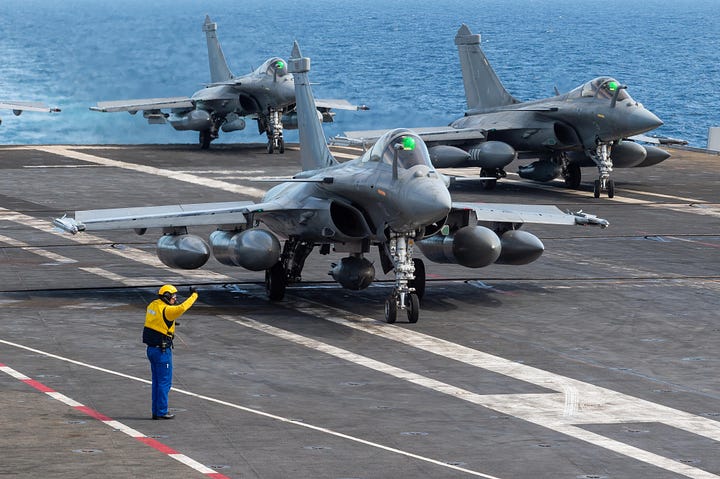
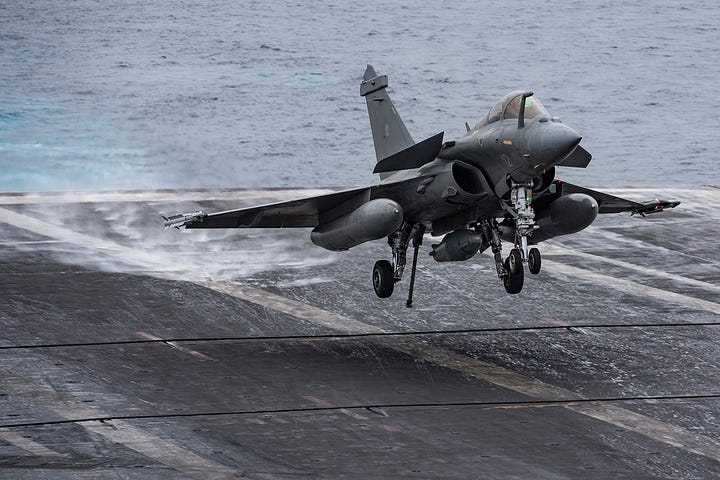

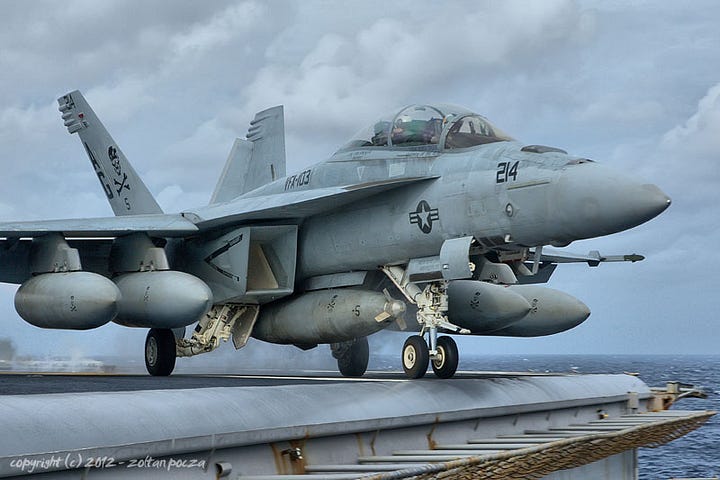
The only member of the Soviet-designed Sukhoi Su-27 fighter aircraft family to be equipped with fuel tanks is the Su-34, which is a heavily modified and more recently introduced Russian-built strike fighter that reflects the greatest level of divergence within the Soviet-Russian Su-27 design family. None of the Chinese-built derivatives of this design lineage, namely the PLAAF’s J-11B, a Su-27 derivative, the PLAAF’s J-16, a Su-27 and Su-30 derivative, and the PLANAF’s original STOBAR J-15 and CATOBAR J-15T, which are T-10K prototype/Su-33 derivatives, are publicly known to be capable of carrying external fuel tanks/drop tanks.
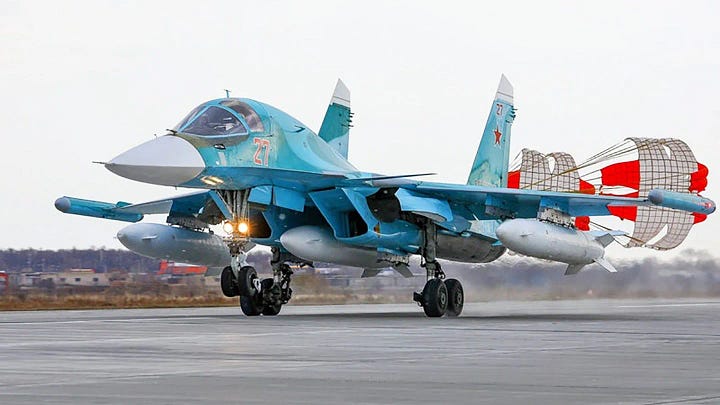
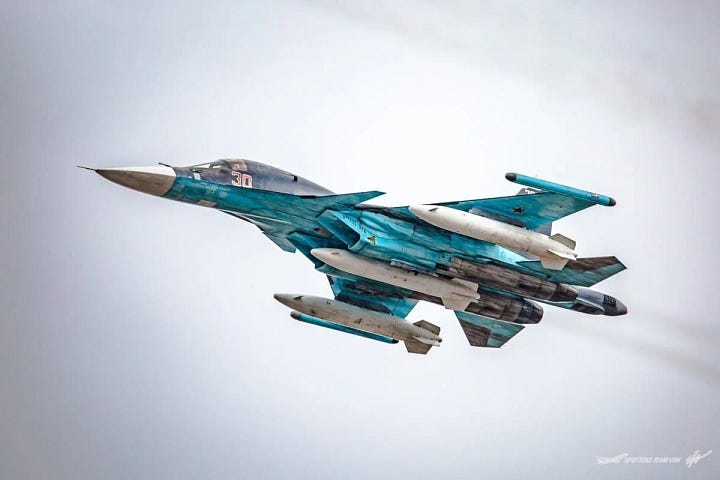
Given the above, a J-15T equipped with a “buddy” refuelling pod can only transfer its internal fuel, the maximum volume of which is fixed, even as a J-15T with full internal fuel tanks will remain far below its maximum take-off weight when operating from a CATOBAR aircraft carrier such as the Fujian. As a result, the J-15T is, all things considered, poorly suited to serving as a carrier-borne aerial refuelling aircraft unless and until it is capable of carrying external fuel tanks/drop tanks that will allow the PLANAF to make the most of the high maximum take-off weight of the J-15T when operating from the Fujian and forthcoming Chinese CATOBAR aircraft carriers.
It is worth mentioning that the Soviet Su-27 design family was developed for use by both the Soviet Air Force and the (separate) Soviet Air Defence Forces (i.e., the PVO Strany), neither of which looked at the Su-27, a very large, high maximum take-off weight fighter aircraft with an essentially unrivalled internal fuel capacity, as lacking in terms of range. As a result, the original Su-27 design, as opposed to the Su-30 and later versions of the Su-27 design family, such as the Su-35, was deployed by the Soviet Union without a nose-mounted refuelling probe. The Chinese-built J-11B, which is deployed in large numbers by the PLAAF and will likely remain in service for another one to two decades, cannot be refuelled in flight, a shortcoming that was only corrected with the Chinese-built two-seat J-16 fighter, which is also deployed in large numbers by the PLAAF, and the J-11D prototype, which was developed as a successor to the J-11B but was superseded in terms of PLAAF procurement by the J-16. The PLANAF’s original STOBAR J-15 was, however, first deployed with a retractable nose-mounted refuelling probe.
While the possibility of modifications to the J-15T airframe, perhaps on the reportedly forthcoming two-seat J-15TS combat-capable training aircraft, which will inherently incorporate other structural modifications much like the J-15DT electronic warfare aircraft to which it is related, to facilitate the use of external fuel tanks cannot be ruled out, a more likely scenario is that the PLANAF will instead deploy an uncrewed CATOBAR aircraft in the vein of the American MQ-25 that will be primarily, but likely not exclusively, employed as an aerial refuelling aircraft. The United States Navy pursued the MQ-25 to both extend the range-endurance of its carrier air wings and, no less importantly, unburden its F/A-18E/F fighters that are regularly tasked with this fairly straightforward undertaking, one that essentially amounts to the wasteful consumption of the flight hours of an expensive fighter aircraft that has an airframe designed for speed and maneuverability and is equipped with many millions of dollars of advanced avionics that are not used in aerial refuelling missions.

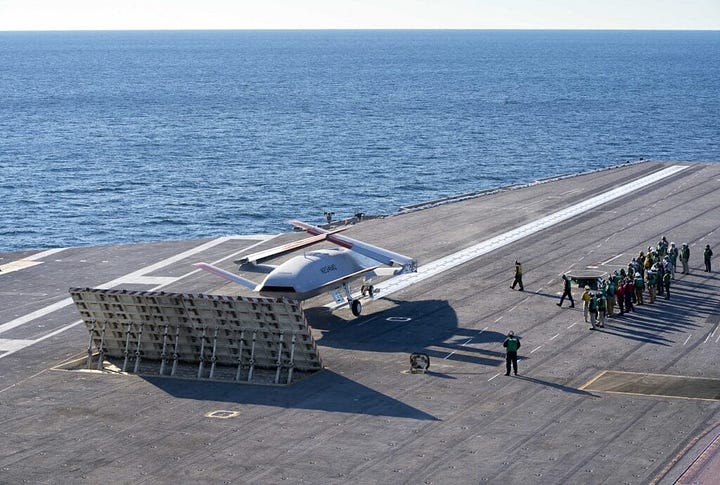
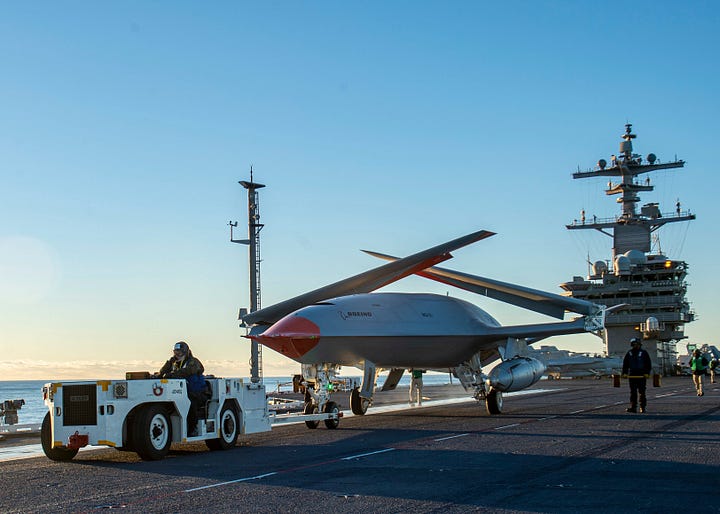

Chinese industry has developed and continues to develop a staggering array of quite high maximum take-off weight uncrewed aircraft, at least some of which are likely to be deployed by the PLAAF and may be deployed on China’s CATOBAR aircraft carriers should these uncrewed aircraft designs be adapted into a CATOBAR configuration. If and when the PLANAF deploys a CATOBAR uncrewed aerial refuelling aircraft in the vein of the MQ-25, the PLANAF will finally have a well-adapted carrier-borne aerial refuelling capability.
All things considered, the single most important implication of the existence of a refuelling capability, however currently imperfect, for the Fujian and forthcoming Chinese CATOBAR aircraft carriers in the military-geographical context of the Western Pacific is that the likes of the J-15T and J-35, as well as reportedly forthcoming uncrewed CATOBAR aircraft, will be able to undertake longer endurance flights, such as combat air patrols, within a radius of, say, 300-500 kilometers from the host CATOBAR aircraft carrier and its accompanying escorts. Beyond the Western Pacific, the implications in terms of extending the maximum range of the PLANAF’s CATOBAR carrier-based aircraft are likely to be more consequential than extending the endurance of said aircraft. The ability to, for example, extend the combat radius of a J-15T or J-35 by even 500 kilometers can facilitate delivering munitions on a distant target several hours earlier than would be the case even if a Chinese aircraft carrier was heading toward the target at a maximum speed of around 30 knots, which is to say around 55 km/h.
If and when Chinese CATOBAR combat aircraft are equipped with long-range strike munitions along the lines of the American AGM-158B JASSM-ER long-range subsonic cruise, the closest publicly known Chinese analogue to which is the shorter-range KF-98, Chinese aircraft carriers may operate far out in the Indian Ocean while remaining capable of, for example, attacking targets in northwestern and western Australia even as the aircraft carrier remains beyond the practical engagement range of the Australian military. Over a longer time horizon, it is possible that China may aspire to employ its CATOBAR aircraft carriers, specifically its reportedly forthcoming nuclear-powered CATOBAR aircraft carriers, in a similar manner across the vast expanse of the Pacific Ocean.
Furthermore, a carrier-based aerial refilling capability will likely play a critically important role if and when the PLANAF deploys a CATOBAR transport/cargo aircraft in the vein of the American C-2 Greyhound, which is derived from the airframe of the American CATOBAR E-2 Hawkeye AEW&C aircraft, the Chinese analogue to which is the KJ-600 CATOBAR AEW&C aircraft. The existence of such a CATOBAR transport/cargo aircraft will enable Chinese CATOBAR aircraft carriers to undertake distant overseas operations and operate far out in the open ocean.
Some related posts:


